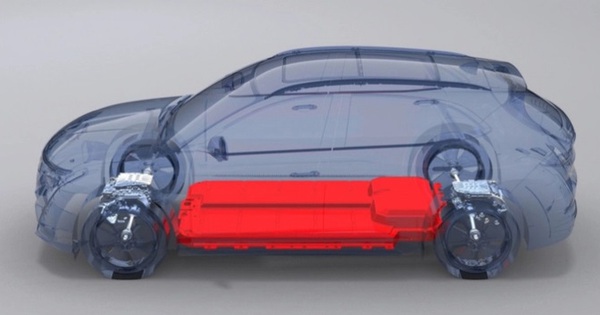Chinese researchers have developed a cloak that can make ground targets disappear from radar satellites.

The invisibility cloak is made up of many thin layers of material. Image: Air Force Technical University
Hiding objects from advanced military radars is very difficult because these systems can detect weapons or infrastructure that conventional cameras cannot and detect objects as small as a shoebox from space. . Unlike telescope satellites that only work during the day, radar satellites can also provide clear images at night. The new device, developed by a team at the Air Force Engineering College in Xi’an, Shaanxi province, is a stretchable fabric that can cover a variety of objects, such as tanks, artillery or radar stations. It is this extraordinary flexibility that can make the object nearly invisible even to radar satellites, according to the study lead and colleagues.
In a magazine article Infrared and Millimeter Waves Last month, the team said that an invisibility cloaked target would look like empty land. Current technology can hide stealth aircraft and other aircraft from radar, but is ineffective on the ground because the radar signal bounces back after making contact with the ground. This means that objects like tanks coated with materials used on stealth aircraft (materials that absorb radar signals or use geometries to deflect radio waves) will stand out because of them. form an unnatural contrast with the surrounding landscape.
However, Xu et al. found another method by modifying the signal model to simulate the signal generated by the natural landscape. The new type of invisibility cloak they developed consists of several layers. At the top is a thin layer of fabric with many printed circuit boards that can affect electromagnetic waves. Xu’s team uses a unique 3D printing technology that can shape circuit boards on a hair-thin fabric with extreme precision. The team then added multiple layers, including plastic and thin metal, to create a “meta surface”, which changed the direction of the signal traveling back, mimicking the radar signal of flat ground.
According to Xu, many metamaterials have been developed to fool radar satellites, but none can move freely and spread like the new type of cloak. When the radar waves hit an uneven object, they bounce back in different directions, allowing the computer to calculate the object’s size and shape by measuring the difference in the signal. But when the team tested the product’s performance in a simulation facility, the waves traveling to the cloak propagated back in a uniform pattern similar to the signal from flat ground. The greater the distance from the radar to the target, the smaller the detection difference.
The team says the technology can also deal with the situation where the radar satellite changes the strength and beam angle to learn more details about the target. However, Xu and colleagues’ design cannot work alone, but must be combined with other methods such as heat reduction and optical camouflage to achieve the desired effect.
An Khang (According to SCMP)
at Blogtuan.info – Source: vnexpress.net – Read the original article here



